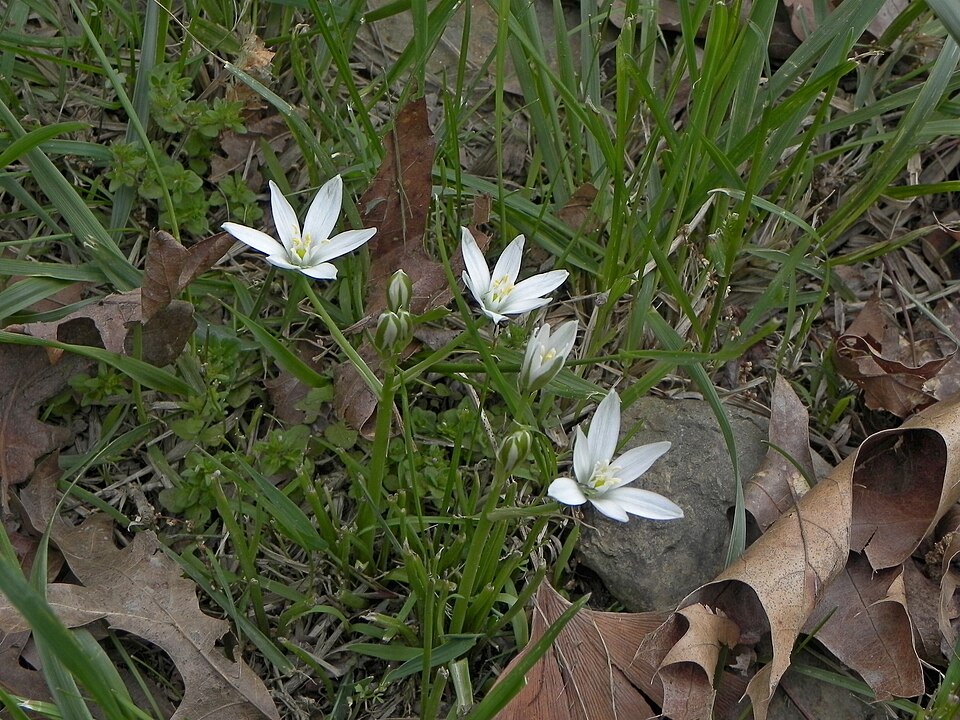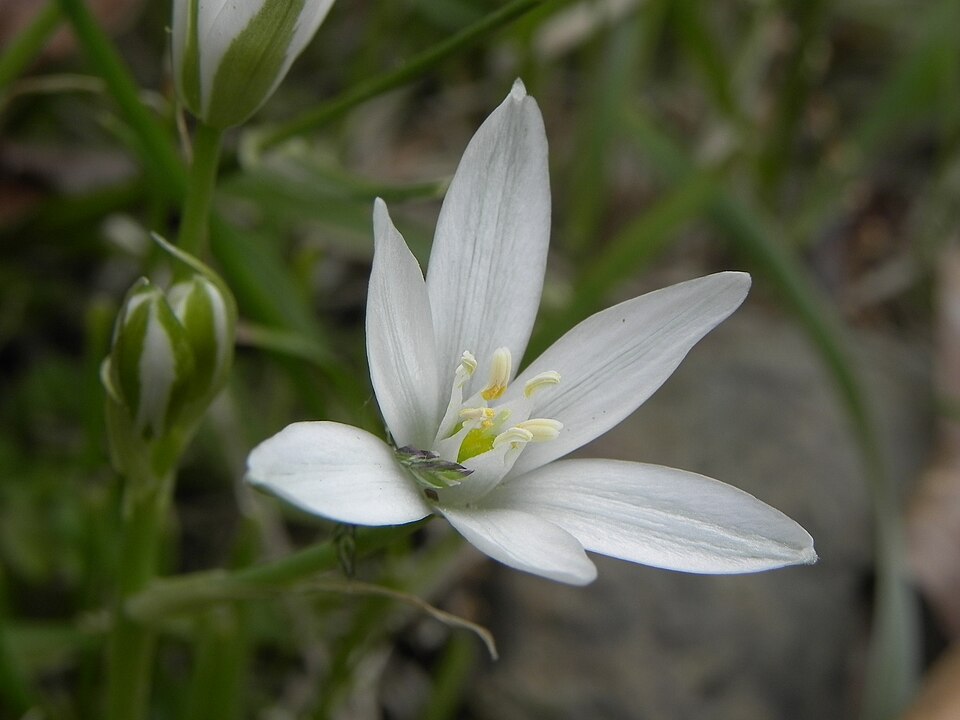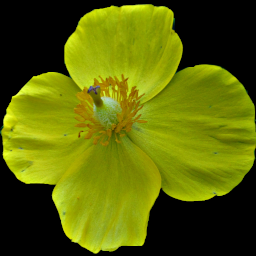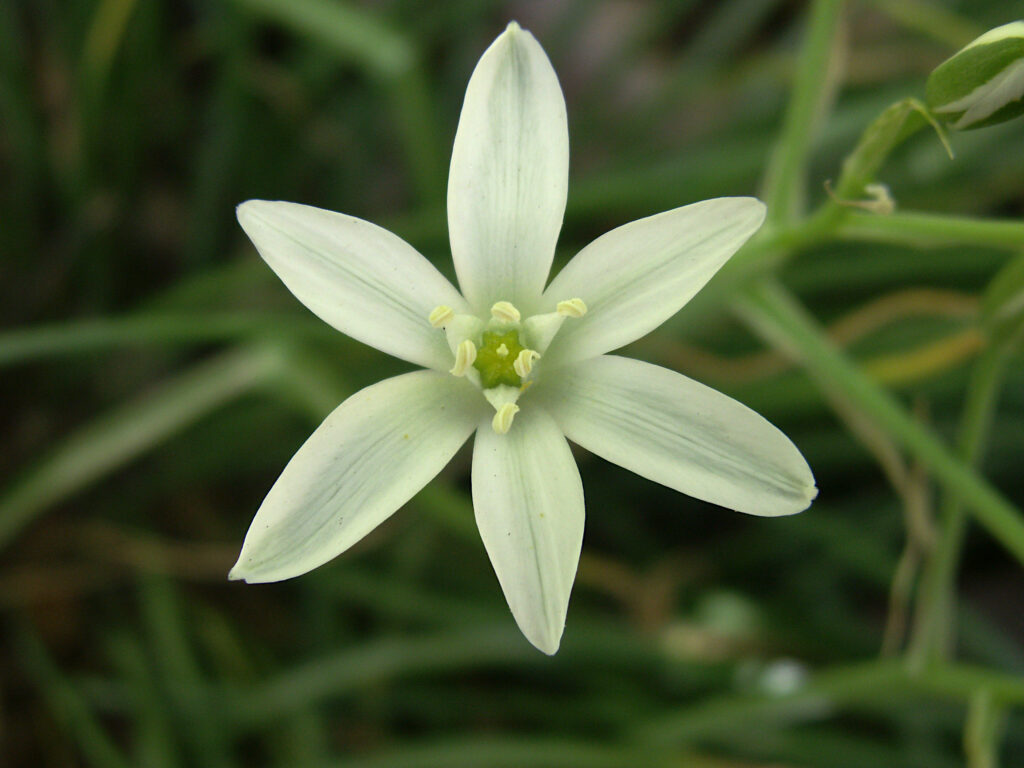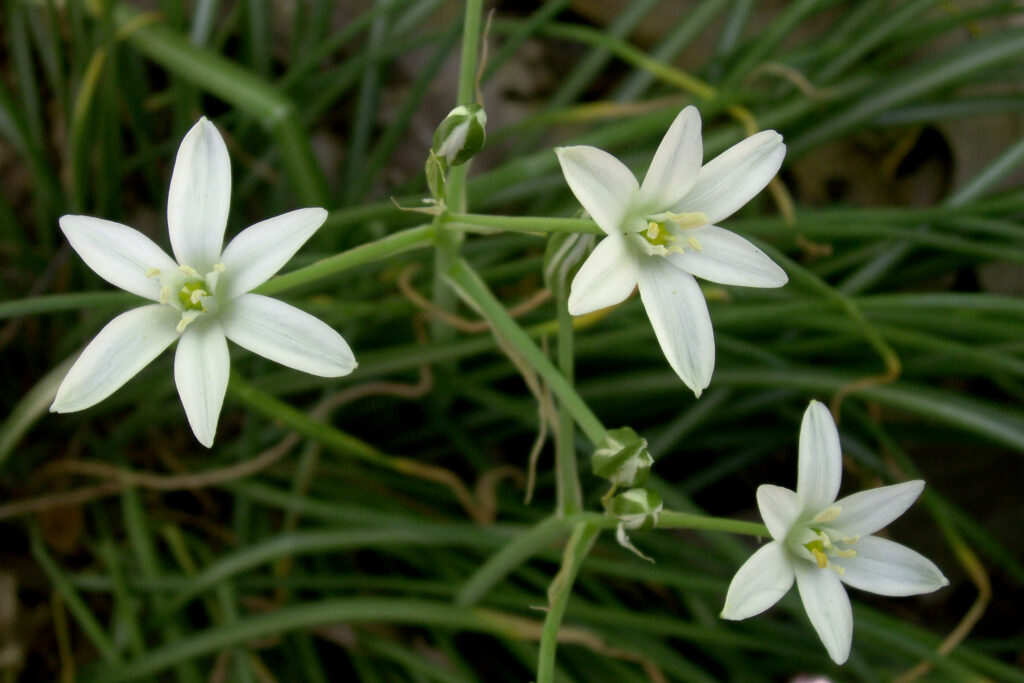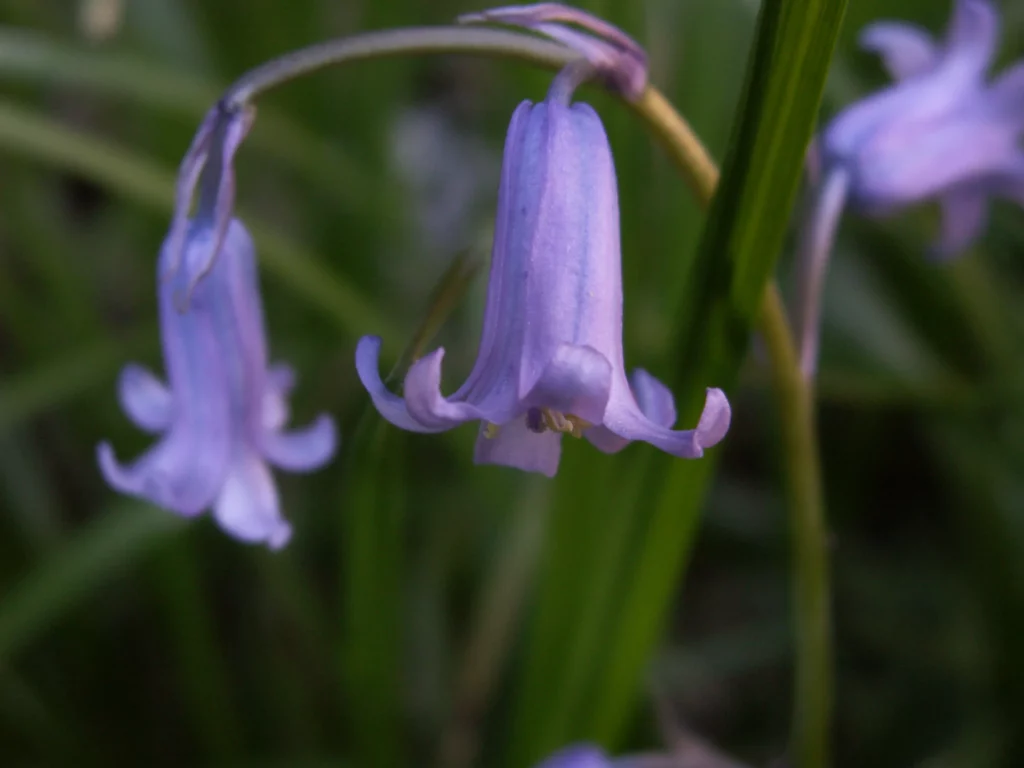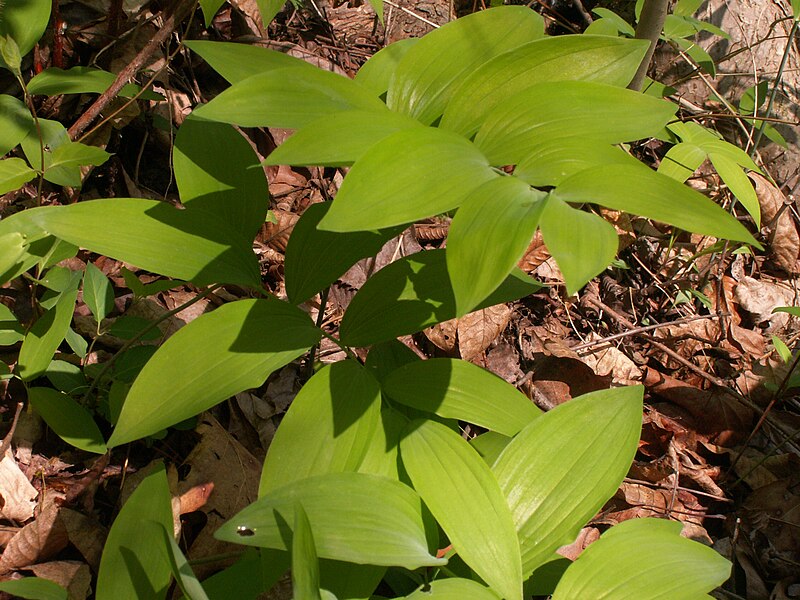
Little white stars that come out in the afternoon; they came over as a garden plant, but they found our climate hospitable and now can be found in lawns and at the edges of parking lots. These flowers were blooming in the Homewood Cemetery.

For a description of the species, see the Ornithogalum umbellatum reference page.
